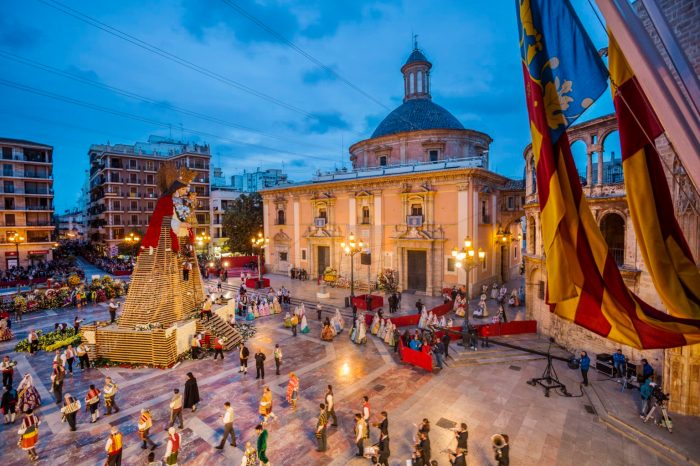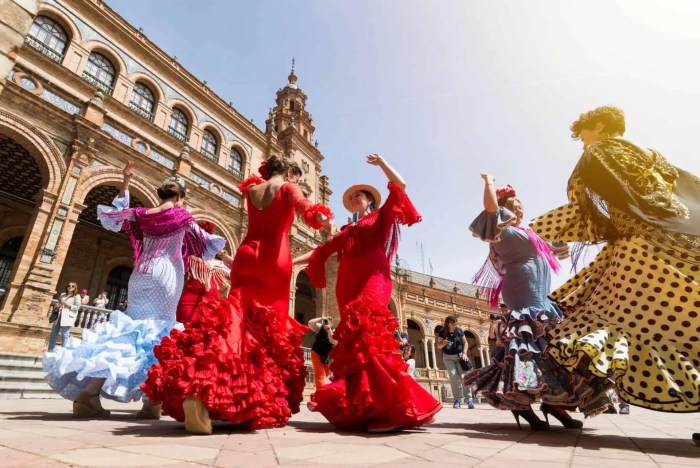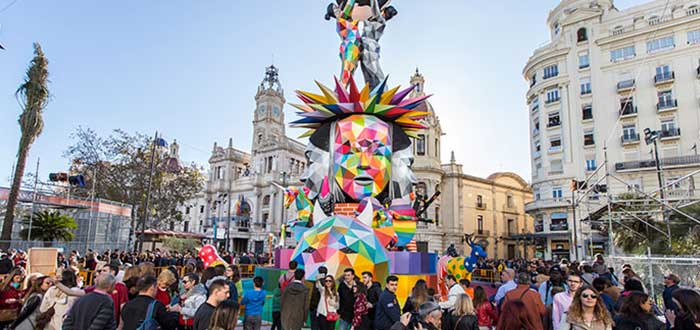La cultura de españa verbos: A captivating exploration into the vibrant tapestry of Spanish culture, where verbs dance and weave, shaping the very essence of the Spanish identity.
From the historical influences that have left their mark on the Spanish language to the intricate nuances and customs expressed through its verbs, this journey unveils the profound impact of Spanish verbs on the cultural landscape of Spain.
Culture of Spain

Culture encompasses the customs, beliefs, arts, and social behavior of a particular society. It profoundly shapes the identity and values of a nation, influencing its way of life, traditions, and perspectives. Spanish culture is a vibrant tapestry woven from a rich historical and geographical tapestry, reflecting the diverse influences that have shaped the Iberian Peninsula over centuries.
Historical Influences
Spain’s culture bears the imprint of numerous civilizations that have left their mark on the land. From the ancient Iberians to the Romans, Visigoths, and Moors, each group has contributed to the unique cultural fabric of Spain. The Reconquista, a centuries-long struggle to reclaim the Iberian Peninsula from Muslim rule, further enriched Spanish culture with a blend of Christian, Islamic, and Jewish influences.
Immerse yourself in the captivating world of Spanish verbs and their rich cultural significance. Whether you’re preparing for the ATI Med Surg Proctored 2023 exam or simply expanding your linguistic horizons, understanding the nuances of Spanish verbs is key. Each conjugation reflects a unique perspective and adds depth to the language, enriching our comprehension of the vibrant culture of Spain.
Key Characteristics and Values
Spanish culture is characterized by a deep appreciation for tradition, art, and social interaction. Spaniards are known for their热情(passion), spontaneity, and a strong sense of community. They value family, friendship, and the pursuit of joy. Spanish culture emphasizes the importance of personal expression, whether through music, dance, or the spoken word.
Verbs in Spanish Culture

The Spanish verb system is a complex and intricate one, with a rich history and a profound influence on the culture of Spain. Verbs in Spanish are not only used to convey the basic actions and events of a story, but also to express cultural nuances, customs, and traditions.
The Role of Verbs in Expressing Cultural Nuances and Customs
Verbs in Spanish are often used to express cultural nuances and customs that are not easily translated into other languages. For example, the verb “estar” can be used to describe a state of being, a location, or a temporary condition.
This verb is often used in Spanish to express emotions, feelings, and relationships in a way that is not possible in English.
The Use of Verbs in Traditional Spanish Songs, Literature, and Folklore
Verbs play a vital role in traditional Spanish songs, literature, and folklore. In Spanish songs, verbs are often used to create a sense of rhythm and movement. In Spanish literature, verbs are used to convey the author’s message and to create a sense of atmosphere and mood.
In Spanish folklore, verbs are used to tell stories and to pass on cultural traditions.
Spanish Verbs in Context

Spanish verbs are not just grammatical tools; they are cultural signifiers that reflect the values, customs, and social interactions of Spanish-speaking communities. The choice of verb in a particular context can convey subtle nuances of meaning and reveal the speaker’s social status, level of formality, and even their emotional state.
In this section, we will analyze the usage of specific Spanish verbs in everyday conversations and examine the cultural implications of verb choice in different social situations. We will also create a table or list of common Spanish verbs and their cultural connotations.
Cultural Implications of Verb Choice, La cultura de españa verbos
The choice of verb in Spanish can have significant cultural implications. For example, the use of the formal verb form “usted” to address someone indicates respect and distance, while the informal form “tú” conveys familiarity and closeness. Similarly, the use of the subjunctive mood can express a sense of uncertainty or politeness, while the indicative mood is more direct and assertive.
The following table provides a few examples of how verb choice can convey cultural meanings in Spanish:
| Verb | Cultural Connotation |
|---|---|
| Usted | Respect, distance |
| Tú | Familiarity, closeness |
| Subjunctive | Uncertainty, politeness |
| Indicative | Directness, assertiveness |
Cultural Impact of Spanish Verbs

Spanish verbs play a crucial role in shaping the cultural norms and behaviors of Spanish-speaking societies. They reflect the unique worldview and perspectives of the people who use them, influencing everything from communication styles to social interactions.
Verbs and Cultural Identity
The rich tapestry of Spanish verbs allows for nuanced expressions of emotion, thought, and action. This linguistic complexity mirrors the diverse cultural identities found within the Spanish-speaking world, where each region has its own unique way of using verbs to convey meaning.
- For example, in Spain, the use of the subjunctive mood is more common than in other Spanish-speaking countries, reflecting a cultural emphasis on politeness and formality.
- In contrast, in Latin America, the use of the indicative mood is more prevalent, reflecting a more direct and assertive communication style.
Verbs and Social Interactions
Spanish verbs also play a significant role in social interactions. The choice of verb tense, mood, and aspect can convey subtle messages about the speaker’s intentions, attitudes, and relationships.
- For example, the use of the present perfect tense can indicate that an action is ongoing or has recently been completed, while the use of the preterite tense can indicate that an action is completed and in the past.
- Similarly, the use of the subjunctive mood can convey a sense of uncertainty or possibility, while the use of the indicative mood can convey a sense of certainty or fact.
Visual Representation of Cultural Impact
The cultural impact of Spanish verbs can be visually represented through an infographic that illustrates the following key points:
- The diversity of Spanish verbs and their cultural significance.
- The role of verbs in shaping Spanish identity and worldview.
- The influence of verbs on social interactions and communication styles.
Such an infographic would provide a valuable resource for understanding the multifaceted cultural impact of Spanish verbs.
Quick FAQs: La Cultura De España Verbos
What is the significance of verbs in Spanish culture?
Verbs in Spanish culture serve as the building blocks of communication, expressing not only actions but also cultural values, customs, and ways of thinking.
How do verbs shape Spanish identity?
Spanish verbs embody the cultural heritage and worldview of Spain, reflecting the nation’s history, traditions, and unique perspective on life.
What are some common Spanish verbs and their cultural connotations?
Common Spanish verbs such as “hablar” (to speak), “comer” (to eat), and “bailar” (to dance) carry deep cultural meanings that extend beyond their literal definitions.

